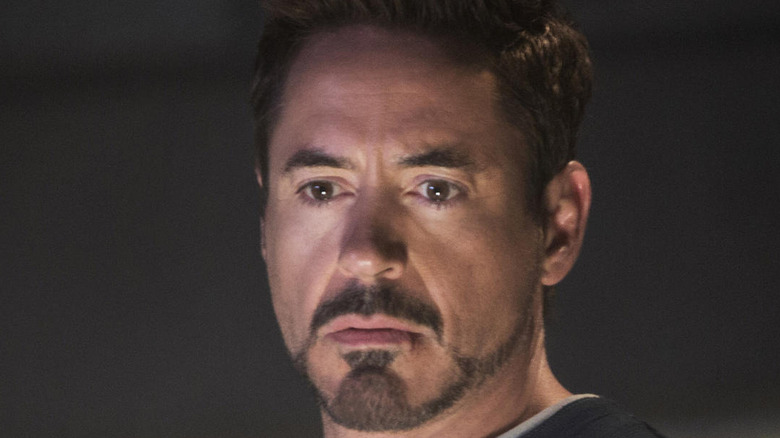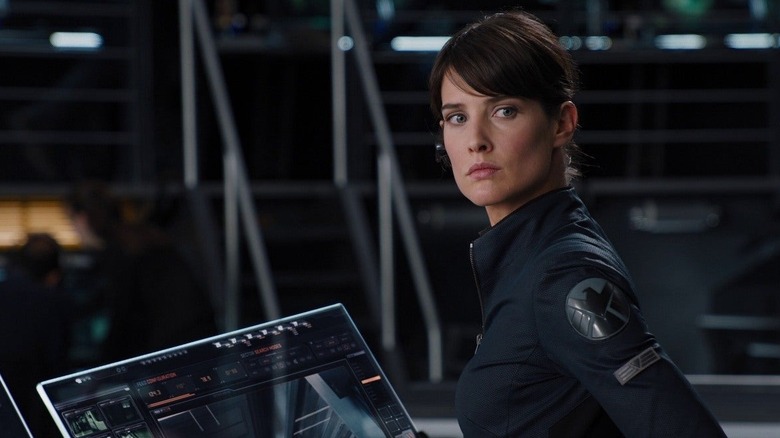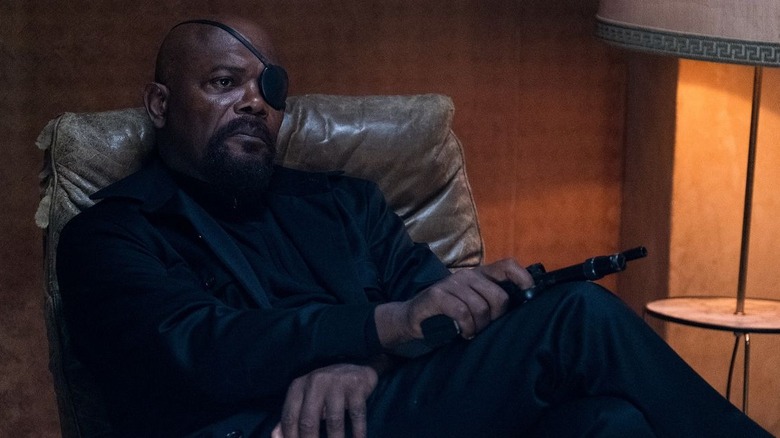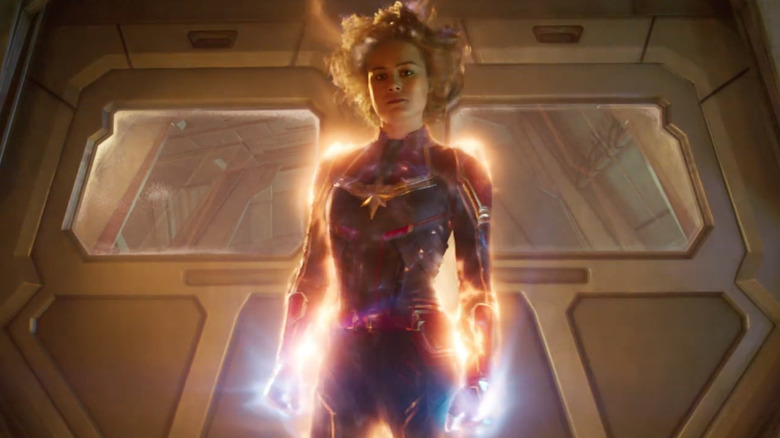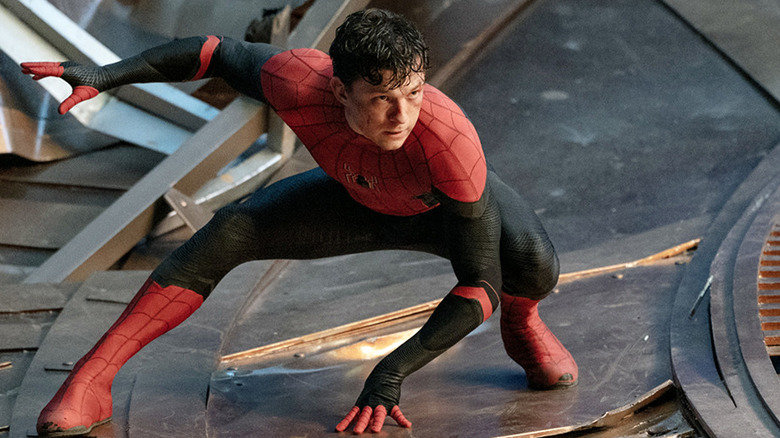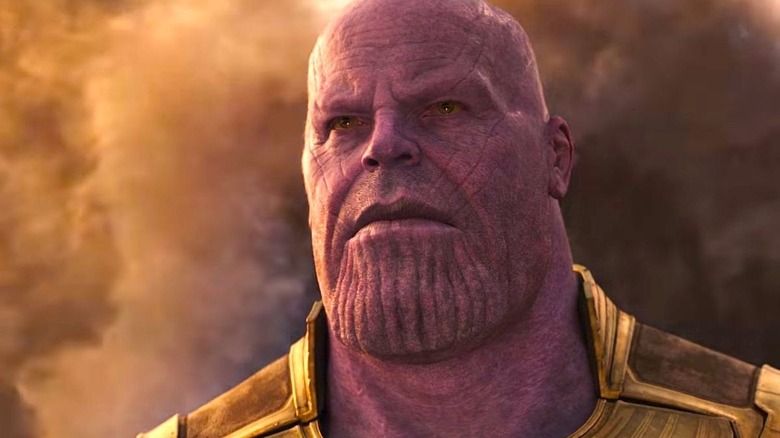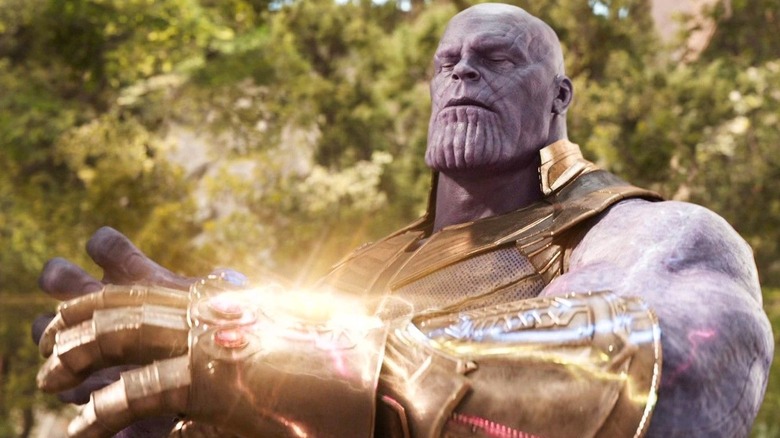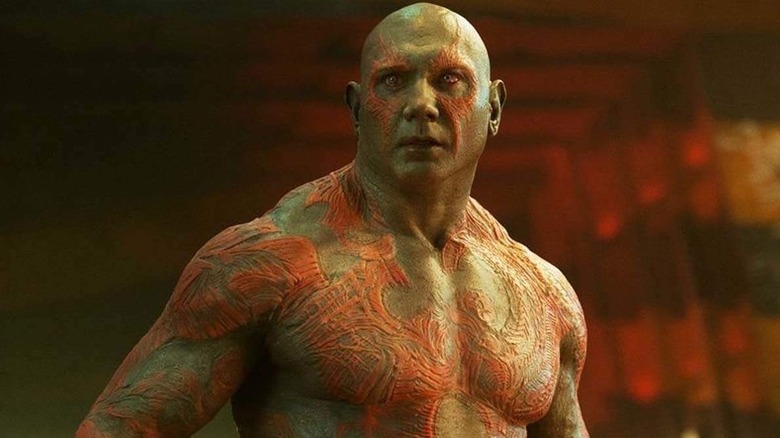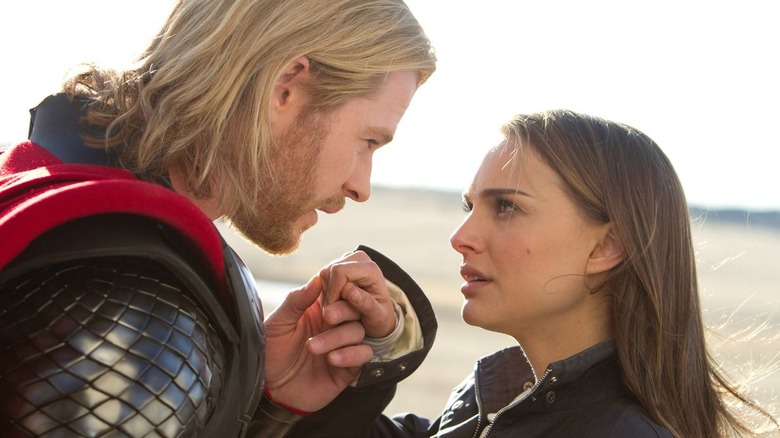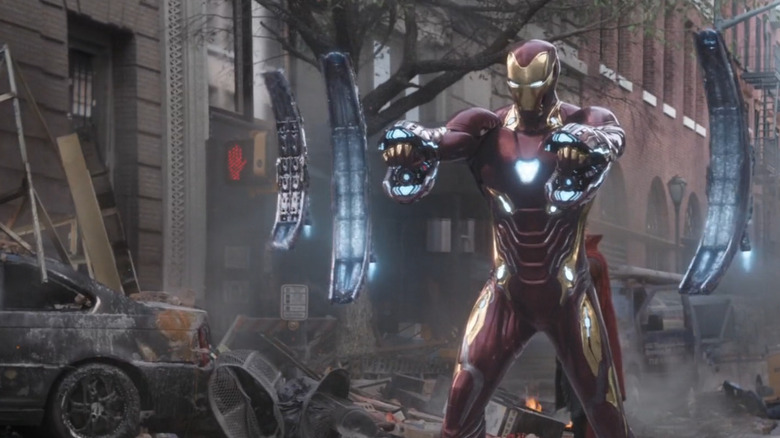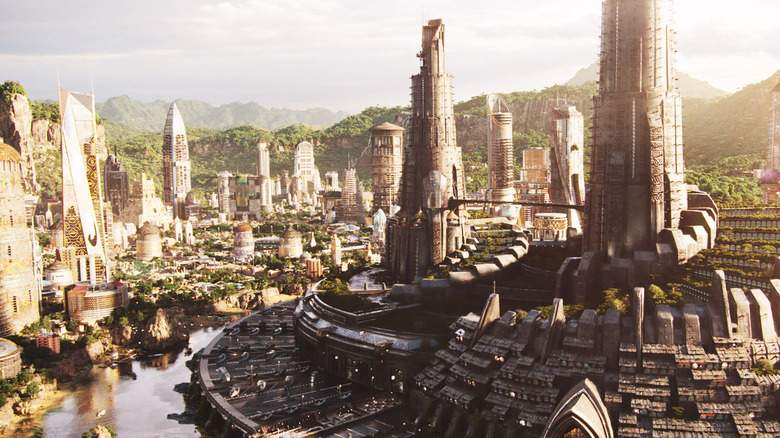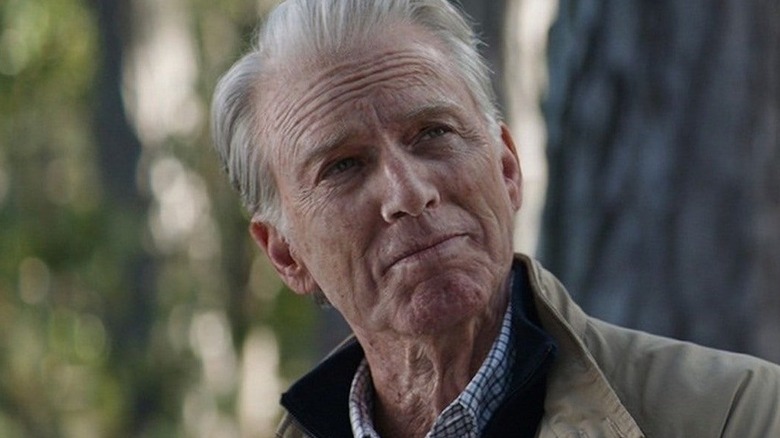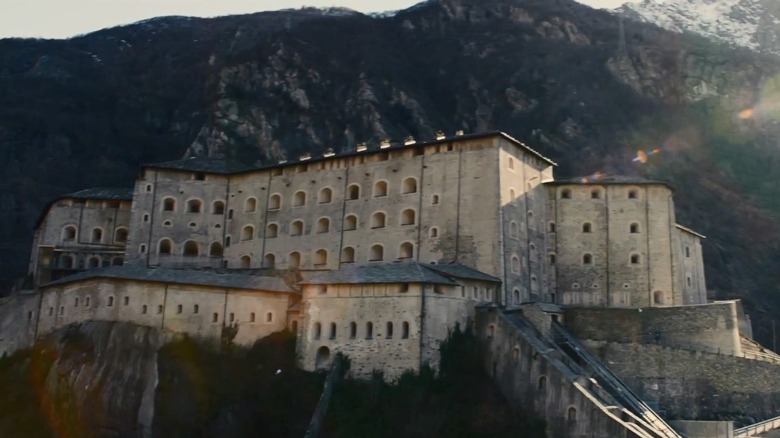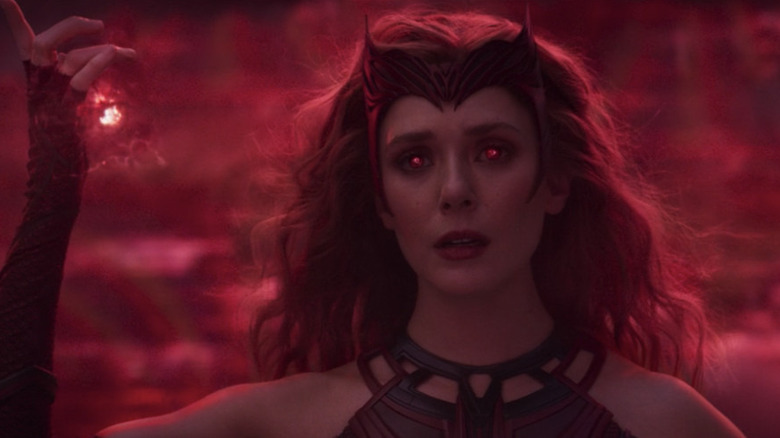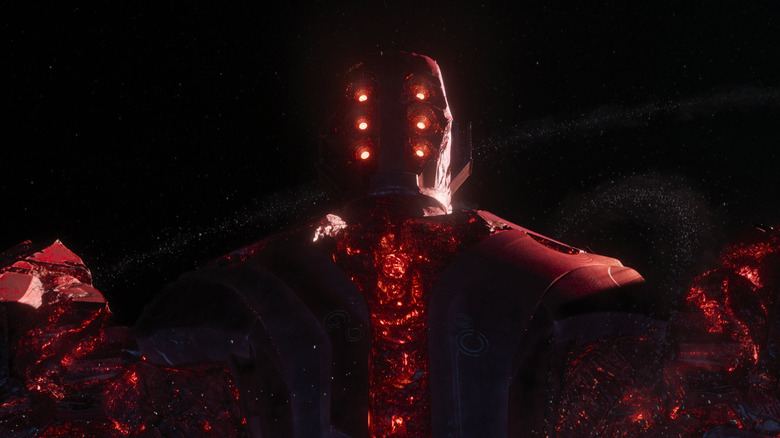Major MCU Moments They Haven't Shown Yet
Since it kicked off in 2008, the MCU has covered a massive swath of Marvel lore across movies, TV shows, and tie-in material. The franchise now includes most of the company's biggest heroes and villains, with many of the stragglers likely to join soon. Rumors of Ghost Rider's return and the incorporation of the X-Men have circulated heavily of late, and an MCU "Fantastic Four" film has already been announced, which could bring with it classic Marvel villain Doctor Doom, the Silver Surfer, Galactus, or other F4-adjacent characters.
Even without that handful of key comic book players, however, Marvel Studios has created an incredibly deep, layered version of the Marvel universe, elevating lesser-known characters like the Guardians of the Galaxy to star status and creating interesting new dynamics, like the mentor-mentee relationship between Spider-Man and Iron Man. The MCU has also expanded well outside its "present-day" timeline, stretching far back into the past to tell the origins of characters like Captain America and teasing age-old bits of lore like the Celestials, Chaos Magic, and the history of Asgard.
Of course, with so much history to cover, not everything can be shown on screen. In fact, the MCU has left a number of its most important moments unseen, preferring to reference them strictly through dialogue. Some of these pivotal events may be shown in future Marvel projects, but others likely never will, leaving their exact details a bit murky. Here are some key moments in the MCU that, nevertheless, haven't been shown on screen yet — and how they could still be.
The origins of SHIELD
SHIELD has played a big role in the MCU, from assembling the original Avengers team to unintentionally enabling the return of HYDRA. The agency's origins and early years, however, have gone largely unshown on screen. The story of SHIELD's founding has been told in different MCU films and shows, and "Agent Carter" and "Captain America: The First Avenger" both detail the operations of the SSR — the group that immediately preceded SHIELD. Despite these tidbits of info, however, there's still a ton of SHIELD history yet to be committed to the screen.
With the agency taking on an increasingly less-visible role in the wake of the Infinity Saga, it's possible that SHIELD's full MCU origins will never be depicted in detail. Samuel L. Jackson can't keep playing Nick Fury forever, and without him, the modern stars of the franchise have few direct ties to SHIELD. Still, that doesn't mean more backstory is impossible.
Disney will want to keep the MCU going for as long as possible, and decades of SHIELD's early operations could provide a great reservoir of content to keep the story going. Cobie Smulders (Maria Hill) will be prominently featured in "Secret Invasion" and is certainly young enough to populate SHIELD tales for years to come, perhaps bookending flashbacks. Then there are older characters like Hank Pym and Janet van Dyne, who could be re-cast as younger versions — given that they worked with SHIELD for quite some time — and appear in such tales.
Nick Fury's backstory
Speaking of Fury, the eye-patched director of SHIELD also has a lot of important history that hasn't been chronicled yet in the MCU. "Captain Marvel" details some of his 1990s exploits as an agent of the organization, but Fury was already a well-established, highly decorated soldier by the events of that film. His record includes an extended tour in the U.S. military through the late 1960s and 1970s, and a career with the CIA. In the past, Nick Fury's early exploits have been the subject of many Marvel comics, and it would be fun to see some of those adventures transferred to the MCU.
Will it happen? That's another matter entirely. Making any sort of Nick Fury prequel would almost certainly require a recast of the character, and because Jackson has become so iconic and beloved in the role, bringing in someone else to play the part could be a risky proposition.
Still, Jackson is old enough that his character could have plausibly served in Vietnam, giving Fury a seemingly ripe story to tell from that angle. Exploring his military background (with a young actor playing Fury in his twenties and thirties) would allow for some other MCU timeline holes to be filled in too, including SHIELD's earlier years, the career of the Red Guardian, and Bucky's Winter Soldier missions. At the very least, Fury will get some additional modern-day development in Disney+'s "Secret Invasion" series.
Captain Marvel's interstellar travels
The most backstory Nick Fury has ever gotten on screen happened in "Captain Marvel," and he isn't the only character featured in that film with some big timeline gaps in the MCU. Carol Danvers herself has spent most of the time we've seen of the MCU — more than two decades — traveling through the universe doing ... things? Presumably, Captain Marvel spent most of that time being the hero the galaxy needs and fighting off various forces of evil — but as of yet, her travels haven't been detailed on screen in any meaningful way.
Fortunately, "The Marvels" is a great opportunity to fill in at least some of Carol's timeline gaps. Per THR, the sequel will take place in the present-day MCU timeline, which makes sense given that Monica Rambeau, who will play a major role in the film, didn't have any superpowers until "WandaVision." However, there's still room for flashbacks, which could be a great way to show how Captain Marvel's character has evolved since the events of the first film.
Spider-Man's origin story
Perhaps the biggest MCU moment yet to be shown on screen is how Tom Holland's Spider-Man actually got his superpowers. Because Holland's version of Peter Parker first debuted in "Captain America: Civil War," there wasn't time for a lengthy origin story, which is probably for the best given how many times the spider bite has been documented in movies over the past couple of decades. Hiding Spider-Man's beginning hasn't hindered the appeal of the MCU character at all, but that doesn't mean there aren't some fans who would have liked to see it on screen.
At this point, however, that seems highly unlikely. "Spider-Man: No Way Home" confirms that Holland's Peter Parker never had an Uncle Ben, removing one of the key parts of the character's traditional origin story. The MCU also implies that Spider-Man didn't really encounter any supervillains prior to his first contact with the Avengers, meaning that his actual origin wouldn't be all that eventful to watch. Plus, with the "Homecoming" trilogy now all wrapped up, Holland's future in the MCU is uncertain, as is that of Spider-Man himself.
Thanos' turn to the dark side
Josh Brolin launched Thanos into the pantheon of all-time-great villains with his CG-heavy performance in "Avengers: Infinity War" and "Avengers: Endgame." A big part of the Mad Titan's immediate appeal was his clear intelligence, cunning, and conviction — qualities that made his genocidal mission all the more unsettling. Yet, at the same time, there's an air of respectability to Thanos. He truly believes he's doing what's best for the universe, and though he's obviously wrong in that belief, there's a kernel of good intentions lingering in the background of his brutal campaign.
While it's known that Thanos adopted his murderous philosophy after his own home world of Titan was destroyed by resource scarcity, his actual turn to the dark side hasn't been documented on screen. Given that his arc in the MCU is finished, it's unlikely that Thanos' early years will ever be shown, but there is potential for at least a bit more explanation of his past now that his brother Eros (played by Harry Styles) has entered the MCU.
The full fallout of Thanos' snap
Yes, the MCU has already shown a lot of the repercussions from Thanos' snap. "WandaVision" and "The Falcon and the Winter Soldier" specifically have shown various aspects of the fallout in microcosm and macrocosm. But with five years spanning between the snap and the blip that brought everyone back, there's a ton that could still be explored.
To be fair, Disney might be better off leaving some of the details of the snap's side effects unexplored. There are some clear scientific and logical issues with how Thanos' plan works out on screen, making a healthy suspension of disbelief necessary to really enjoy the end of the Infinity Saga. Even so, there are plenty of implications from the snap that could be interesting to tie into future materials. Even though most modern MCU projects are taking place after the events of Endgame, the characters involved will still be reeling from five years of grief and collective societal trauma. Obviously, it's not in Marvel's best interest to pump out a bunch of depressing post-snap stories, and it's probably better for Marvel films to collectively grow beyond Thanos' shadow. Still, fans probably haven't seen the last of the Mad Titan's impact on this world.
Drax's tragic past
Played with skilled comedic prowess and dramatic gravitas by Dave Bautista, Drax has been an MCU favorite since he first appeared in "Guardians of the Galaxy." The character is chiefly motivated by a desire for revenge, sparked when his family was killed by Ronan the Accuser under orders from Thanos. Drax's dark backstory hasn't been properly shown on screen, and given the implied brutality of it, that's probably for the best.
The MCU aims to primarily be a fun, adventure-driven franchise — a series of films you can watch with your kids as easily as your grandparents. At its best, it's also delivered some powerful and emotional character arcs, but diving too deep down tragic storylines has never been the series' standard practice. For that reason, and because Drax is a relatively minor character in the grand scope of the MCU, it makes sense why a deep dive into the loss of his family hasn't occurred. With "Guardians of the Galaxy Vol. 3" on the way, there's still a chance Drax could get some flashbacks on the big screen, but it remains to be seen if that actually manifests.
Thor and Jane Foster's breakup
The early "Thor" movies aren't exactly the most critically acclaimed in the MCU, and many of their attempts at lore creation have subsequently been left by the wayside in the franchise's more recent years. Natalie Portman's Jane Foster character suffered that same fate, but with her impending return in "Thor: Love and Thunder," it's time to explain part of her and Thor's story that has barely been touched on: their breakup.
In "Thor: Ragnarok," the eponymous god of thunder mentions in passing that he and Jane are no longer together, and the relationship is barely mentioned again (possibly to distance Taika Waititi's film from its predecessors). But with Jane now returning — and likely more important to the story than ever — viewers deserve a more complete explanation of what happened between her and Thor. In all likelihood, that's exactly what they'll get in "Love and Thunder," and with Waititi once again at the helm, it should be an entertaining explanation.
The creation of Iron Man's Mark L suit
Tony Stark has worn so many different variations of the Iron Man armor over the years that it's almost impossible to keep track of them all. However, one particularly innovative edition of the suit could use a bit more explanation: the Mark 50, or Mark L, suit featured in "Avengers: Infinity War." The main difference between the Mark L and Iron Man's older suits is the heightened incorporation of nanotech, allowing the suit to form almost instantaneously from a tiny hub worn by Tony at all times. The onscreen effect is very cool to watch, but how did Stark come about this innovation, and how does it work?
To answer those questions, you'd have to do a little bit of digging. Per Animated Times, the MCU tie-in book "The Wakanda Files" explains that the nanotech innovation came after a Stark Industries collaboration with Wakandan scientists and engineers. Because a touchstone of Iron Man is the montage scenes of suit and technology creation that often accompany him, and because the Mark L is essentially his armor's ultimate form (with only minor alterations being made between "Infinity War" and "Endgame") it would have been cool to see the suit's design process on screen. Unfortunately, with Robert Downey Jr. now gone from the franchise, that will most likely never happen.
The history of Wakanda
As a whole, Wakanda is one of the most intriguing elements of the MCU, a long-secretive city with the world's most advanced technology in its hands. At the same time, it's one of the least explored elements of this series of films.
Because of the nation's history of isolationism, Wakanda doesn't play much of a role in the MCU story until the events of "Captain America: Civil War." That leaves a rich, largely unseen past filled with eye-popping tech, entrenched clan rivalries, and a cavalcade of compelling characters.
Digging into the history of Wakanda, be it the reign of King T'Chaka or some other era of the nation's history, could be an exciting path for the MCU to take in the future. And with an MCU TV show set in Wakanda currently in the works from "Black Panther" director Ryan Coogler, it seems pretty likely. Seeing how the people of Wakanda discovered the potential of vibranium and used it to construct their thriving metropolis could potentially be a lot of fun, and at the same time it would fill in an important part of the larger MCU lore.
Captain America's adventures in the past
After finally defeating Thanos, we last saw Steve Rogers pass his Captain America shield on to Sam Wilson and take an early retirement in the past, reuniting with Peggy Carter through a bit of time travel. It was a sweet ending to the character's MCU arc, and a fitting reward for his unceasing campaign for justice and peace — and in retrospect, it also creates plenty of new questions about the unseen elements of Captain America's life.
Peggy would surely have still been active in her work at the time Steve returned to her, either as an operative for SHIELD or some other similar organization. And at the end of "Endgame," he's still pretty young. Does that mean that the two of them could have teamed up on some more adventures? Did they hide Steve's return from the rest of the world? How did their reunion change other things in the timeline? And how did Steve manage to return every Infinity Stone to its rightful place, which was his main mission in the first place? Could Red Guardian's alleged battle against Captain America — referenced in "Black Widow" — have been a real adventure opposite a Steve who remained active after traveling back in time?
If you look too hard at the logic of Steve's retirement, some details start to make less and less logical sense. For that reason, and the fact that Chris Evans' time in the MCU is over (presumably, at least), Marvel Studios is unlikely to revisit his time travels. But that doesn't mean it's impossible.
The Avengers' campaign against HYDRA
"Captain America: The Winter Soldier" shook up the MCU in 2014 by revealing that HYDRA was alive and well, hidden within the ranks of SHIELD. The film then concluded with SHIELD effectively being destroyed from the inside, and though HYDRA's initial plan had been foiled by Steve Rogers, the terrorist group quickly began regrouping in the shadows.
In response, the Avengers reassembled to put a stop to HYDRA's villainy once and for all. The very end of that campaign was shown at the beginning of "Avengers: Age of Ultron," but there's a lot in the middle that we never saw.
For obvious reasons, bringing together all the original "Avengers" stars at this point is entirely far-fetched, but it's fun to imagine what the team's run against HYDRA would have looked like on the big screen. There would have been plenty of other hidden bases to find and dismantle before the one shown at the beginning of "Ultron," and with Earth's mightiest heroes fighting near their collective peak, those battles would have been a sight to see.
The origins of Chaos Magic
"WandaVision" rolled out some big revelations to kick off MCU Phase 4, one of the biggest being the introduction of Chaos Magic, the source of Wanda's power. Previously, it was believed that Wanda's MCU abilities came strictly from her exposure to the Mind Stone in HYDRA's experiments, but she achieved even greater feats after unlocking what Agatha Harkness identified as Chaos Magic. Ancient and dangerous, Chaos Magic is connected to the Darkhold — also known as the Book of the Damned — and the Dark Dimension where the book comes from.
In the comics, Chaos Magic has a long, storied history involving an evil Elder God called Chthon. While it's unclear how closely the MCU intends to stick to that origin story, at the very least there will need to be some additional explanation for Wanda's powers, where they came from, what their limits are, and how they're connected to the larger Marvel Universe. Many of those answers may come in "Doctor Strange in the Multiverse of Madness," but for now, it's unclear exactly how the MCU's unique breed of Chaos Magic works.
The age of the Celestials
Another big part of the MCU's ancient history yet to be shown in any great detail on screen is the age of the Celestials — the giant, spacefaring, godlike beings largely responsible for creating the modern universe and the life that inhabits it. Prior to "Eternals," the only living Celestial seen in the Franchise was Ego, who himself was born after most of his race had already disappeared. Brief glimpses of other Celestials are seen in "Guardians of the Galaxy," and "Eternals" expands their lore by showing the race's more sinister side.
Still, not much has been shown of the Celestials' heyday, or of the early Marvel universe at large. In the comics, the Celestials are instrumental in the creation of Mutants on Earth, and with the X-Men likely to be incorporated into the MCU at some point down the line, the Celestials could once again play into that storyline. Either way, it would be fun just to see some more onscreen instances of the universe's early years, especially since the Marvel comics are packed with epic, magical sagas set in that era.
